Sustainable Building
See our blog for new projects, announcements, and all things TMS Architects.Traditional Meets Sustainable – Part 2
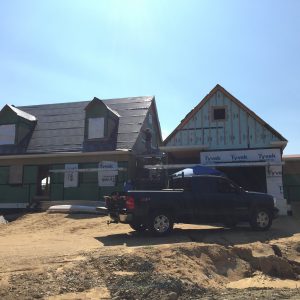
A few months ago, we shared the beginning stages of a sustainable Maine home in progress with you. This homeowner desired to implement practical, sustainable elements within a traditional, Cape Cod style home. In our last post, we walked you through our process from laying the foundation to completing the basic structure of the home. Today, we’ll give you a detailed look inside so you can see how we’ve insulated the house for maximum efficiency.
 Read More
Read More
Traditional Meets Sustainable – Part 1
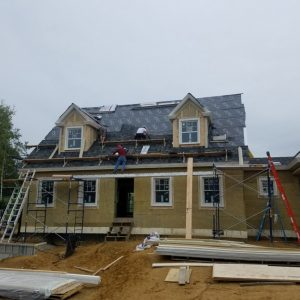
When you read the words “Maine home,” we bet there’s plenty that comes to mind: rolling hills, peaceful views, and classic New England style. Sustainability and efficiency, however, are probably not at the top of that list. In the past, prioritizing sustainability would dictate the overall design of a home, meaning styles like a classic Cape house would be out of the question. Today, however, it’s easier than ever to incorporate green features into traditional architecture… of course, having years of experience with both like we do doesn’t hurt either.
In this series of blog posts, we’ll be documenting the progress of a Maine home that features both classic design elements and a forward-thinking approach for both the current homeowner and the generations to come. We hope you enjoy following along!
 Read More
Read More
Reclaimed Materials: Fashionable and Environmentally Friendly
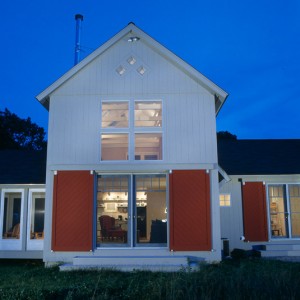
Preserving our environment, or “green living” has moved past the stage of being a fad and is now a priority by the majority of society. While many designers and architects focus on the energy systems and environmentally-friendly high insulation values of building, TMS Architects also incorporates reclaimed materials in home design whenever possible to support our commitment to sustainable architecture.
 Read More
Read More
Shape the Landscape to a Working Rainscape
With so much recent knowledge about rainscaping, the flood of information can often be overwhelming. So, we’ve taken our favorite tips and compiled some of them to help you learn more about shaping your landscape into a functional, working rainscape.
 Read More
Read More
Nifty Kitchen Countertops Using Reclaimed & Repurposed Wood
Nothing quite compares to the rich tones and textures that reclaimed wood can bring to kitchen designs. Naturally beautiful and warm, reclaimed wood countertops can enhance the aesthetics of your kitchen while reducing your impact on the environment. Since no two pieces of wood are alike, you know you are getting a one-of-a-kind countertop with its own unique story. Not to mention, reclaimed and repurposed wood countertops can be just as beautiful as they are durable, functional, and environmentally-friendly.
 Read More
Read More
Upcycled Materials Great for Insulating Sustainable Homes
Homeowners are increasingly committing to living greener more eco-friendly lifestyles, and that extends to how they build and remodel their homes. If sustainability is a concern for your home, you will want to look into eco-friendly insulation materials.
 Read More
Read More
Designing a Sustainable Home Around Natural Elements
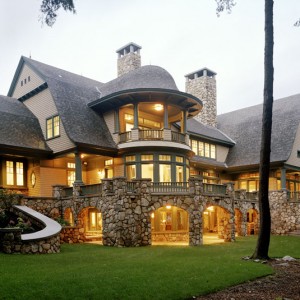
If you are a fan of green building like we are, you are probably going to look for ways to incorporate your natural surroundings into your home as well. Many times, building or remodeling your home so that it is more in harmony with nature can boost both the way your home performs as well as the way it makes you feel. If your home has a close relationship with your surroundings, it creates a calming effect, and here are some ways to a build a home with natural elements in mind:
 Read More
Read More
Heating & Lighting Interiors with Natural Sunlight
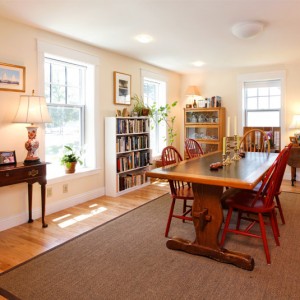
Good natural light is a feature many people appreciate in a home. But good natural light can also help with energy efficiency to create a more eco-friendly and sustainable home. Besides helping to illuminate the home and offering scenic views, windows, skylights, and glass walls can also help generate heat to warm your home, helping you to save on energy costs.
 Read More
Read More
A Sustainable Garden Loves Back: Planning Your Own
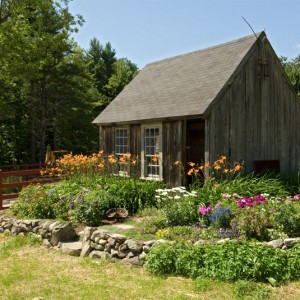
Looking for a way to give back to nature while receiving the benefits of flowers, plants, and vegetables? Growing your own plants and food is an important step toward leading a more sustainable lifestyle. Switching over to a sustainable gardening style goes a really long way in building a garden that you can then admire, eat from, and enjoy. To help you avoid getting lost on the way, we have some information to help grow your sustainable garden into a feature you can be proud of.
 Read More
Read More
Sustainability Spotlight: Constructing Silo & Shipping Container Homes
As the green building industry continues to expand, builders and architects are only getting more creative with sustainable home designs. We’re particularly inspired by the concept of re-purposing structures such as silos and shipping containers into beautiful and efficient eco-friendly homes. These designs take upcycling to the next level.
 Read More
Read More
Building with Reclaimed Brick & Green Advantages
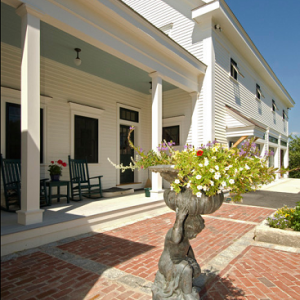
Sustainable building materials can be just as beautiful and functional as they are eco-friendly. As more and more homeowners and builders go green, brick masonry construction is becoming an important player in green building and sustainable home design. This is because bricks are inherently green and result in gorgeous structures that last for generations to come.
 Read More
Read More
Utilize Rainwater Harvesting for Sustainable Living
Saving water (and money) is easy with a residential rainwater harvesting system. Rainwater is great for watering all gardens and plants, including edible ones. The two most common home rainwater harvesting systems are rain barrels and cisterns. Rain barrels are easy to install and use and do not require any type of permit. Large cistern systems that hold more than 100 gallons and involve pumps will warrant the help of a professional to obtain the proper permits.
 Read More
Read More
Sustainable Architecture: Facing Carbon Head-On in the Future
The concept of sustainability dates back to the 1970s when the energy crisis, uncontrolled pollution and environmentally damaging materials made the world realize we couldn’t depend on fossil fuels forever. Fortunately, new studies have unveiled the benefits of renewable resources, recycling existing materials and adopting sustainable practices to help turn things around, and in industries such as organic architecture, professionals of all stripes are trying to do their part to better the world.
 Read More
Read More
Sustainable Architecture: Integrating Bamboo Into a Home
Bamboo is making a greater appearance in modern home design as conscientious owners and sustainable architects are learning more about this material’s great sustainability factors.
As the fastest growing wood producing plant in the world, bamboo is tougher than steel when it comes to tensile and compression strength. It’s also harder than red oak and maple, and isn’t as susceptible to warping from temperature or humidity as conventional wood products. Add to these factors rapid growth, improved air quality and breathtaking beauty, bamboo is truly a favorite material in sustainable architecture.
 Read More
Read More
Sustainable Architecture: Can a Building Make Its Occupants Happy
Our earliest ancestors understood the concept of sustainable architecture without realizing there was a name for it. They set up home in savannas, woodlands and caverns that provided the proper amount of natural light, protection from weather extremes and plenty of plants and vegetation to survive and barter. Unfortunately, centuries passed before we began to consider these benefits of biophilic architecture.
 Read More
Read More
Utilize the Energy Star Light Bulb Guide When Seeking New Lighting
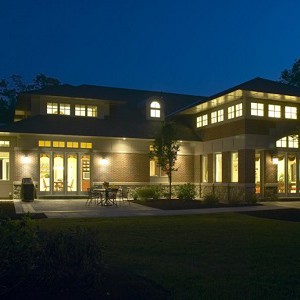
An important facet of sustainable architecture is to reduce energy consumption and your carbon footprint. Although it may seem insignificant, something as simple as replacing ordinary incandescent bulbs in your home with Energy Star-rated products can add up to substantial savings on both your energy bills and your home’s carbon footprint.
 Read More
Read More
Elevate a Simple Home with Warm Woods
The natural charm and warmth of wood has long been recognized by designers and homeowners alike as one of the preeminent material choices for historic homes. Its multicolored tones and subdued textures have often been imitated, but never truly reproduced by other materials, both naturally or man-made.
 Read More
Read More
LED Lighting: What the Craze is All About
Light emitting diodes, or LEDs, are semiconductors that emit light when voltage is applied. Although they’ve been around in limited form since the 1960s, it wasn’t until the last decade that they gained in popularity as an energy efficient lighting source. With a high light output and a wide range of colors available, LEDs are now used for both general and targeted lighting.
 Read More
Read More
Sustainable Architecture 101: The Utility of Salvaged Wood
An important facet of sustainable architecture includes using building materials that are not harmful to the environment, as well as reusing materials whenever possible. Salvaged wood can be upcycled and used in many applications that meet both of those criteria. Considering the beauty, uniqueness and historical quality of reclaimed wood, you should not overlook its usefulness.
 Read More
Read More
Upgrading a Historic Home with Energy-Efficient Lighting
In an era where energy-efficiency is at the forefront of everyone’s minds, when it comes to lighting a home effectively, modernizing the lighting in an historic preservation can be a challenge for both the homeowner and the architect. In order to protect the integrity of historic preservation in New England, finding a balance between the natural daylight and historic light fixtures with modern upgrades is essential.
 Read More
Read More
